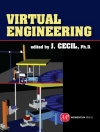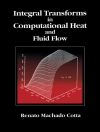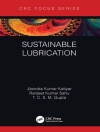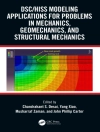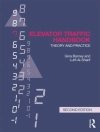Surrogate models expedite the search for promising designs by standing in for expensive design evaluations or simulations. They provide a global model of some metric of a design (such as weight, aerodynamic drag, cost, etc.), which can then be optimized efficiently.
Engineering Design via Surrogate Modelling is a self-contained guide to surrogate models and their use in engineering design. The fundamentals of building, selecting, validating, searching and refining a surrogate are presented in a manner accessible to novices in the field. Figures are used liberally to explain the key concepts and clearly show the differences between the various techniques, as well as to emphasize the intuitive nature of the conceptual and mathematical reasoning behind them.
More advanced and recent concepts are each presented in stand-alone chapters, allowing the reader to concentrate on material pertinent to their current design problem, and concepts are clearly demonstrated using simple design problems. This collection of advanced concepts (visualization, constraint handling, coping with noisy data, gradient-enhanced modelling, multi-fidelity analysis and multiple objectives) represents an invaluable reference manual for engineers and researchers active in the area.
Engineering Design via Surrogate Modelling is complemented by a suite of Matlab codes, allowing the reader to apply all the techniques presented to their own design problems. By applying statistical modelling to engineering design, this book bridges the wide gap between the engineering and statistics communities. It will appeal to postgraduates and researchers across the academic engineering design community as well as practising design engineers.
- Provides an inclusive and practical guide to using surrogates in engineering design.
- Presents the fundamentals of building, selecting, validating, searching and refining a surrogate model.
- Guides the reader through the practical implementation of a surrogate-based design process using a set of case studies from real engineering design challenges.
Accompanied by a companion website featuring Matlab software at http://www.wiley.com/go/forrester
Mục lục
Preface ix
About the Authors xi
Foreword xiii
Prologue xv
Part I Fundamentals 1
1 Sampling Plans 3
1.1 The ‘Curse of Dimensionality’ and How to Avoid It 4
1.2 Physical versus Computational Experiments 4
1.3 Designing Preliminary Experiments (Screening) 6
1.3.1 Estimating the Distribution of Elementary Effects 6
1.4 Designing a Sampling Plan 13
1.4.1 Stratification 13
1.4.2 Latin Squares and Random Latin Hypercubes 15
1.4.3 Space-filling Latin Hypercubes 17
1.4.4 Space-filling Subsets 28
1.5 A Note on Harmonic Responses 29
1.6 Some Pointers for Further Reading 30
References 31
2 Constructing a Surrogate 33
2.1 The Modelling Process 33
2.1.1 Stage One: Preparing the Data and Choosing a Modelling Approach 33
2.1.2 Stage Two: Parameter Estimation and Training 35
2.1.3 Stage Three: Model Testing 36
2.2 Polynomial Models 40
2.2.1 Example One: Aerofoil Drag 42
2.2.2 Example Two: A Multimodal Testcase 44
2.2.3 What About the k-variable Case? 45
2.3 Radial Basis Function Models 45
2.3.1 Fitting Noise-Free Data 45
2.3.2 Radial Basis Function Models of Noisy Data 49
2.4 Kriging 49
2.4.1 Building the Kriging Model 51
2.4.2 Kriging Prediction 59
2.5 Support Vector Regression 63
2.5.1 The Support Vector Predictor 64
2.5.2 The Kernel Trick 67
2.5.3 Finding the Support Vectors 68
2.5.4 Finding μ 70
2.5.5 Choosing C and ε 71
2.5.6 Computing ε: v-SVR 73
2.6 The Big(ger) Picture 75
References 76
3 Exploring and Exploiting a Surrogate 77
3.1 Searching the Surrogate 78
3.2 Infill Criteria 79
3.2.1 Prediction Based Exploitation 79
3.2.2 Error Based Exploration 84
3.2.3 Balanced Exploitation and Exploration 85
3.2.4 Conditional Likelihood Approaches 91
3.2.5 Other Methods 101
3.3 Managing a Surrogate Based Optimization Process 102
3.3.1 Which Surrogate for What Use? 102
3.3.2 How Many Sample Plan and Infill Points? 102
3.3.3 Convergence Criteria 103
3.4 Search of the Vibration Isolator Geometry Feasibility Using Kriging Goal Seeking 104
References 106
Part II Advanced Concepts 109
4 Visualization 111
4.1 Matrices of Contour Plots 112
4.2 Nested Dimensions 114
Reference 116
5 Constraints 117
5.1 Satisfaction of Constraints by Construction 117
5.2 Penalty Functions 118
5.3 Example Constrained Problem 121
5.3.1 Using a Kriging Model of the Constraint Function 121
5.3.2 Using a Kriging Model of the Objective Function 123
5.4 Expected Improvement Based Approaches 125
5.4.1 Expected Improvement with Simple Penalty Function 126
5.4.2 Constrained Expected Improvement 126
5.5 Missing Data 131
5.5.1 Imputing Data for Infeasible Designs 133
5.6 Design of a Helical Compression Spring Using Constrained Expected Improvement 136
5.7 Summary 139
References 139
6 Infill Criteria with Noisy Data 141
6.1 Regressing Kriging 143
6.2 Searching the Regression Model 144
6.2.1 Re-Interpolation 146
6.2.2 Re-Interpolation with Conditional Likelihood Approaches 149
6.3 A Note on Matrix Ill-Conditioning 152
6.4 Summary 152
References 153
7 Exploiting Gradient Information 155
7.1 Obtaining Gradients 155
7.1.1 Finite Differencing 155
7.1.2 Complex Step Approximation 156
7.1.3 Adjoint Methods and Algorithmic Differentiation 156
7.2 Gradient-enhanced Modelling 157
7.3 Hessian-enhanced Modelling 162
7.4 Summary 165
References 165
8 Multi-fidelity Analysis 167
8.1 Co-Kriging 167
8.2 One-variable Demonstration 173
8.3 Choosing Xc and Xe 176
8.4 Summary 177
References 177
9 Multiple Design Objectives 179
9.1 Pareto Optimization 179
9.2 Multi-objective Expected Improvement 182
9.3 Design of the Nowacki Cantilever Beam Using Multi-objective, Constrained Expected Improvement 186
9.4 Design of a Helical Compression Spring Using Multi-objective, Constrained Expected Improvement 191
9.5 Summary 192
References 192
Appendix: Example Problems 195
A.1 One-Variable Test Function 195
A.2 Branin Test Function 196
A.3 Aerofoil Design 197
A.4 The Nowacki Beam 198
A.5 Multi-objective, Constrained Optimal Design of a Helical Compression Spring 200
A.6 Novel Passive Vibration Isolator Feasibility 202
References 203
Index 205
Giới thiệu về tác giả
Dr. Alexander I. J. Forrester is Lecturer in Engineering Design at the University of Southampton. His main area of research focuses on improving the efficiency with which expensive analysis (particularly computational fluid dynamics) is used in design. His techniques have been applied to wing aerodynamics, satellite structures, sports equipment design and Formula One.
Dr Andras Sobester is a Lecturer and EPSRC/ Royal Academy of Engineering research Fellow in the School of Engineering Sciences at the University of Southampton. His research interests include aircraft design, aerodynamic shape parameterization and optimization, as well as engineering design technology in general.
Professor Andy J. Keane currently holds the Chair of Computational Engineering at the University of Southampton. He leads the University’s Computational Engineering at the Design Research Group and directs the rolls-Royce University Technology centre for Computational Engineering. His interests lie primarily in the aerospace sciences, with a focus on the design of aerospace systems using computational methods. He has published over two hundred papers and three books in this area, many of which deal with surrogate modelling concepts.



